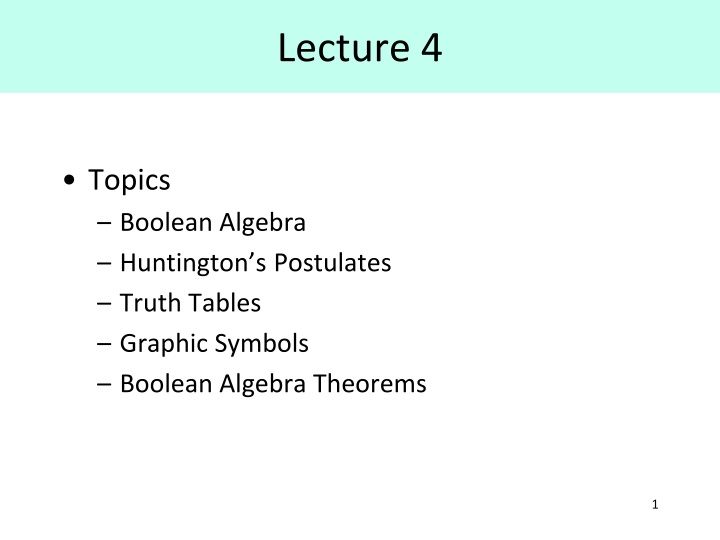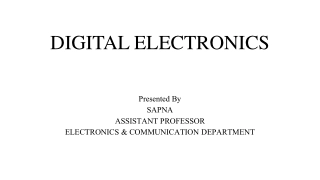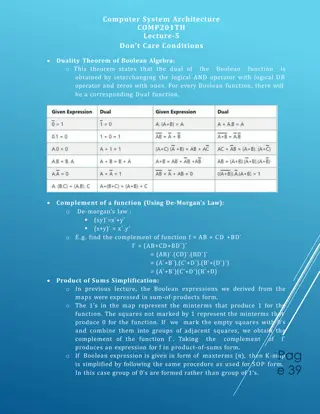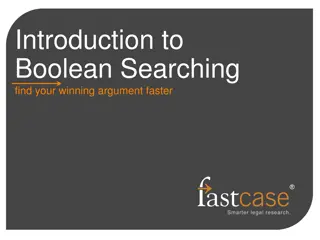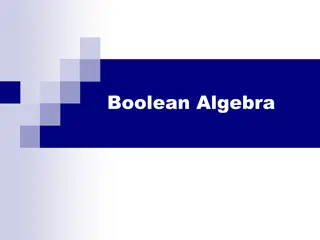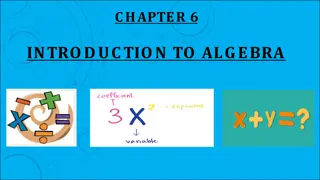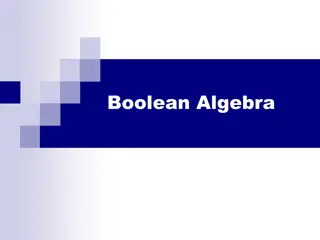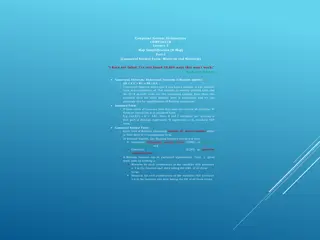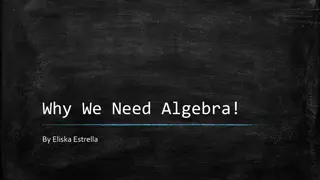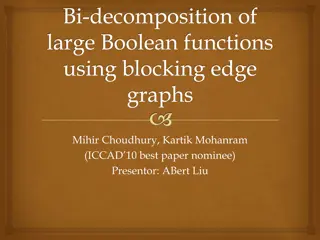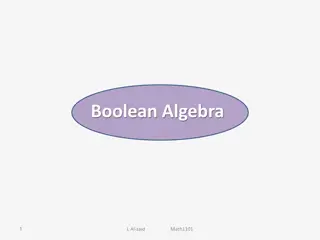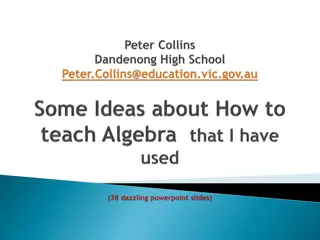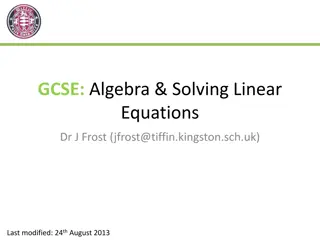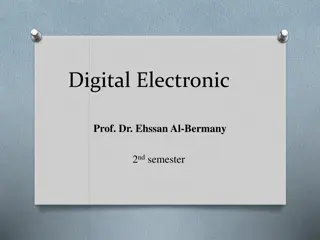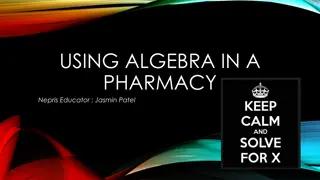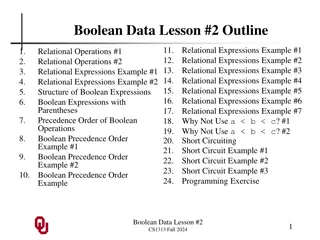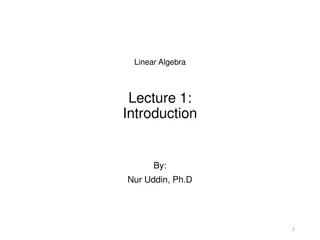Boolean Algebra Fundamentals
The foundational concepts of Boolean algebra, including postulates, truth tables, graphic symbols, and key theorems. Delve into the history from Aristotle to George Boole, H.E. Huntington, and Claude Shannon. Understand Boolean algebra literals, operators, and precedence rules through engaging visuals and equations.
Download Presentation

Please find below an Image/Link to download the presentation.
The content on the website is provided AS IS for your information and personal use only. It may not be sold, licensed, or shared on other websites without obtaining consent from the author.If you encounter any issues during the download, it is possible that the publisher has removed the file from their server.
You are allowed to download the files provided on this website for personal or commercial use, subject to the condition that they are used lawfully. All files are the property of their respective owners.
The content on the website is provided AS IS for your information and personal use only. It may not be sold, licensed, or shared on other websites without obtaining consent from the author.
E N D
Presentation Transcript
Lecture 4 Topics Boolean Algebra Huntington s Postulates Truth Tables Graphic Symbols Boolean Algebra Theorems 1
Boolean Algebra 2
Boolean Algebra A fire sprinkler system should spray water if high heat is sensed and the system is set to enabled Let Boolean variable h represent high heat is sensed, e represent enabled, and F represent spraying water. Then an equation is: F = h AND e A car alarm should sound if the alarm is enabled, and either the car is shaken or the door is opened Let a represent alarm is enabled, s represent car is shaken, d represent door is opened, and F represent alarm sounds. Then an equation is: F = a AND (s OR d) Assuming that our door sensor d represents door is closed instead of open (meaning d=1 when the door is closed, 0 when open), we obtain the following equation: F = a AND (s OR NOT(d)) 3
Boolean Algebra (History) 384-322 BC: Aristotle, foundations of logic 1854: George Boole, An Investigation of the Laws of Thought (mathematical methods for two-valued logic) 1904: H.E. Huntington, Sets of Independent Postulates for the Algebra of Logic 1938: Claude Shannon, A Symbolic Analysis of Relay Switching Circuits 4
Boolean Algebra Postulates (Axioms) Accepted as true; Foundation for further proofs Values B = {0, 1} Variables A,B,C X,Y,Z Ready, Green, OverWeightLimit Operators + Additional Operators () = 5
Boolean Algebra Literals Variable or Complement of Variable X,DoorOpen, Green, Green Expressions Constants (0,1), Literals, Operators (X + Y Z), A + B Precedence Complement ( ) , AND ( ), OR (+) () Can be used to modify order 7
Operators Complement (NOT) A /A !A A ~A A OR A + B A | B A B AND A * B A & B A B A B For typographical convenience, you ll see many variations on the symbols used to represent these operations. 8
Truth Tables (NOT) 9
Graphic Symbols (NOT) 10
Additional Operators NOR A + B A | B A B NAND A * B A & B A B A B 11
Truth Tables X Y X Y X Y X + Y 0 0 1 0 0 1 0 1 0 0 1 1 1 0 0 1 0 1 1 1 0 1 1 0 NOR operator NAND operator 12
Additional Operators: XOR and XNOR XOR (Exclusive OR, Modulo 2) A B XNOR (Exclusive NOR, Equivalence) A B 14
Truth Tables X Y X Y X Y X Y 0 0 0 0 0 1 0 1 1 0 1 0 1 0 1 1 0 0 1 1 0 1 1 1 XOR operator XNOR operator 15
Graphic Symbols Observe that this is sum of products of literals 16
Boolean Functions Product Terms Comprised of literals (including complements), AND X Y Z A B C Sum Terms Comprised of literals (including complements), OR X + Y + Z A + B + C Sum of Products (SOP) X Y + X Z -- note: parentheses not needed Product of Sums (POS) (X + Y) (X + Z) F(X,Y,Z) = Boolean function of 3 variables: X,Y,Z 17
Truth Tables Question: How many rows are there in a truth table for n variables? 2n B5 B4 B3 B2 B1 B0 F 0 0 0 0 0 0 0 0 As many rows as unique combinations of inputs 1 0 0 0 0 0 1 1 2 0 0 0 0 1 0 1 Enumerate by counting in binary 3 0 0 0 0 1 1 0 26 = 64 . . . . . . 63 1 1 1 1 1 1 1 18
Boolean Algebra -- Manipulation Simplify Literal Count Reduction Reduce Number of Terms Transform: Put in Preferred Form AND/OR NAND/NOR Can apply Huntington s Postulates and Theorems to Simplify or Transform Boolean equations 19
Reducing Number of Terms F = (X + Y) (X + Z) = X + Y Z Huntington s Postulate P4a Observe that this is product of sums of literals 1. Next slide has theorems of Boolean Logic. 2. Don t have to memorize these, but should be able to apply them 20
Boolean Theorems: let us discuss each of them 22
Literal Count Reduction F = X Y + X + Y Z = Y + X + Y Z = Y + X Simplification Theorem Absorption Theorem Simplification Theorem X Y + X = Y + X Y + Y Z= Y(1+Z) = Y 1 = Y Absorption Theorem Y + Y Z = Y 24
De Morgans Theorems F = X Y Z = X + Y + Z deMorgan s Theorem F = X + Y + Z = X Y Z deMorgan s Theorem From implementation with NAND gate to NOR and Inverters 25
Proofs Using Boolean Algebra Prove: X + X = X X + X = (X + X) 1 = (X + X) (X + X) = X + X X = X + 0 = X Q.E.D. Huntington P2b: X 1 = X Huntington P5a: X + X = 1 Huntington P4a: X + YZ = (X + Y) (X + Z) Huntington P5b: X X = 0 Huntington P2a: X + 0 = X Using Principle of Perfect Induction Truth Tables! 26
Principle of Perfect Induction Prove: X Y + X Z + Y Z = X Y + X Z X Y Z X Y X Z Y Z X Y X Z 0 0 0 0 + 0 + 0 = 0 0 + 0 = 0 0 0 1 0 + 1 + 0 = 1 0 + 1 = 1 0 1 0 0 + 0 + 0 = 0 0 + 0 = 0 0 1 1 0 + 1 + 1 = 1 0 + 1 = 1 1 0 0 0 + 0 + 0 = 0 0 + 0 = 0 1 0 1 0 + 0 + 0 = 0 0 + 0 = 0 1 1 0 1 + 0 + 0 = 1 1 + 0 = 1 1 1 1 1 + 0 + 1 = 1 1 + 0 = 1 27
Questions, Problems and Exam Problems 1. Give examples of axioms in Boolean Algebra. 2. Create a truth table of function f = a b. 3. Create a truth table of function f = (a*b) . 4. Create a truth table of function f = NOR(a,b). 5. Show graphic symbols for all Boolean Gates. 6. Using truth table prove that NOT(a+b) = NOT(a) * NOT( b). 7. Using truth table prove that (a b) = NOT(a b). 8. Explain De Morgan Theorems using graphic symbols. 9. Draw schematic of the circuit for function f = (ab) + c d (e+g). Use gates AND, OR and NOT. 10. Draw schematic of the circuit for function f = (ab) + c d (e+g). Use gates NAND only. 11. Draw schematic of the circuit for function f = (ab) + c d (e+g). Use gates NOR only. 12. Using perfect induction prove DeMorgan s Laws. 13. Use DeMorgan s Laws to prove a b+ab =a(ab) +b(ab) = (a+b)(ab) . 14. Prove a 0=a, a a =1, a 1=a . 15. Prove that a+b = a b (ab)=a+a b = a a b 16. Prove that if ab=0 then a+b = a b 17. Draw circuit equivalents of 5 selected Boolean Laws. 28
Sources Prof. Mark G. Faust John Wakerly
